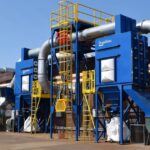Plastering represents one of the most technically demanding finishing trades, requiring extensive material science knowledge and application expertise to achieve truly superior results. Industry analysis indicates that plastering defects account for approximately 27% of interior finish callbacks across residential and commercial projects, highlighting the importance of proper contractor selection. Engaging professional Melbourne plastering services provides significant advantages through specialized expertise, appropriate material selection, and application techniques specifically adapted to local environmental conditions and building practices. This comprehensive examination explores the critical considerations when selecting plastering contractors, including technical qualifications, material options, project management approaches, and quality assurance protocols—providing the detailed understanding necessary to make informed decisions for your residential or commercial plastering needs.
Understanding Plastering System Variations
Traditional lime plaster systems offer distinct performance characteristics increasingly valued in heritage restoration and premium residential applications, notes Atlas Property Management Group. These systems utilize slaked lime putty (calcium hydroxide) with various aggregates rather than modern gypsum compounds. Their primary advantage lies in exceptional breathability—with moisture vapor transmission rates typically 3-5 times higher than standard gypsum systems. This characteristic makes them particularly valuable for older buildings or environmentally sensitive applications where moisture management becomes crucial.
Veneer plastering represents an increasingly popular middle-ground between traditional solid plaster and standard drywall systems. This hybrid approach applies thin (typically 2-3mm) plaster finishes over specialized gypsum boards, providing improved impact resistance and acoustic performance compared to standard joint-finished drywall. The system delivers approximately 65% of solid plaster’s performance advantages while reducing labor costs by roughly 40%—making it particularly suitable for premium residential applications with budget constraints.
Ornamental plastering requires specialized expertise increasingly rare among general plasterers. True ornamental work involves creating or replicating decorative elements including cornices, ceiling roses, and architectural moldings through traditional running techniques or casting methods. Quality practitioners maintain extensive mold libraries and running tools while understanding period-appropriate designs—critical for heritage restorations where historical accuracy matters.
Material Selection Considerations
Gypsum compound variations dramatically impact performance beyond basic setting times. Standard setting compounds (typically 20-90 minute working times) provide adequate performance for basic applications but lack the hardness and durability of premium formulations. Top-tier Melbourne plasterers often utilize specialized compounds incorporating acrylic polymers and reinforcing fibers, increasing surface hardness by approximately 35% while improving crack resistance dramatically.
Substrate preparation materials significantly influence long-term adhesion success. Quality systems employ specialized bonding agents matched to specific substrate conditions rather than all-purpose primers. Porous masonry requires different preparation than dense concrete, while previously painted surfaces demand specialized etching primers creating mechanical teeth for proper adhesion. This material science knowledge represents a key differentiator between premium and basic plastering services.
Finish coat formulations determine both aesthetic quality and maintenance requirements. Premium finishes incorporate specialized aggregate gradations and polymer modifications that improve burnishing capability during application while increasing stain resistance and cleanability in service. These seemingly minor formula variations translate to significant performance differences, particularly in high-traffic areas where surface durability becomes paramount.
Technical Application Expertise
Float techniques significantly impact final surface quality beyond visible smoothness. Professional plasterers employ specific trowel movements creating particular compression patterns within the material—increasing density without causing excessive surface shrinkage. These techniques result from years of experience rather than simple tool manipulation, representing craft knowledge impossible to acquire through casual DIY applications.
Corner treatment methodology separates true craftsmen from basic applicators. Quality corners require specialized techniques creating perfect geometric intersections while maintaining material consistency through these transition areas. Professional plasterers utilize purpose-specific corner tools and application sequences ensuring these typically problematic areas match adjacent surface quality perfectly.
Environmental adaptation demonstrates true technical mastery. Expert plasterers adjust material formulations, mixing ratios, and application techniques based on ambient conditions including temperature, humidity, and air movement. This adaptive approach allows consistent results across Melbourne’s variable climate conditions—particularly important during summer months when rapid drying can compromise quality without proper technical adjustments.






